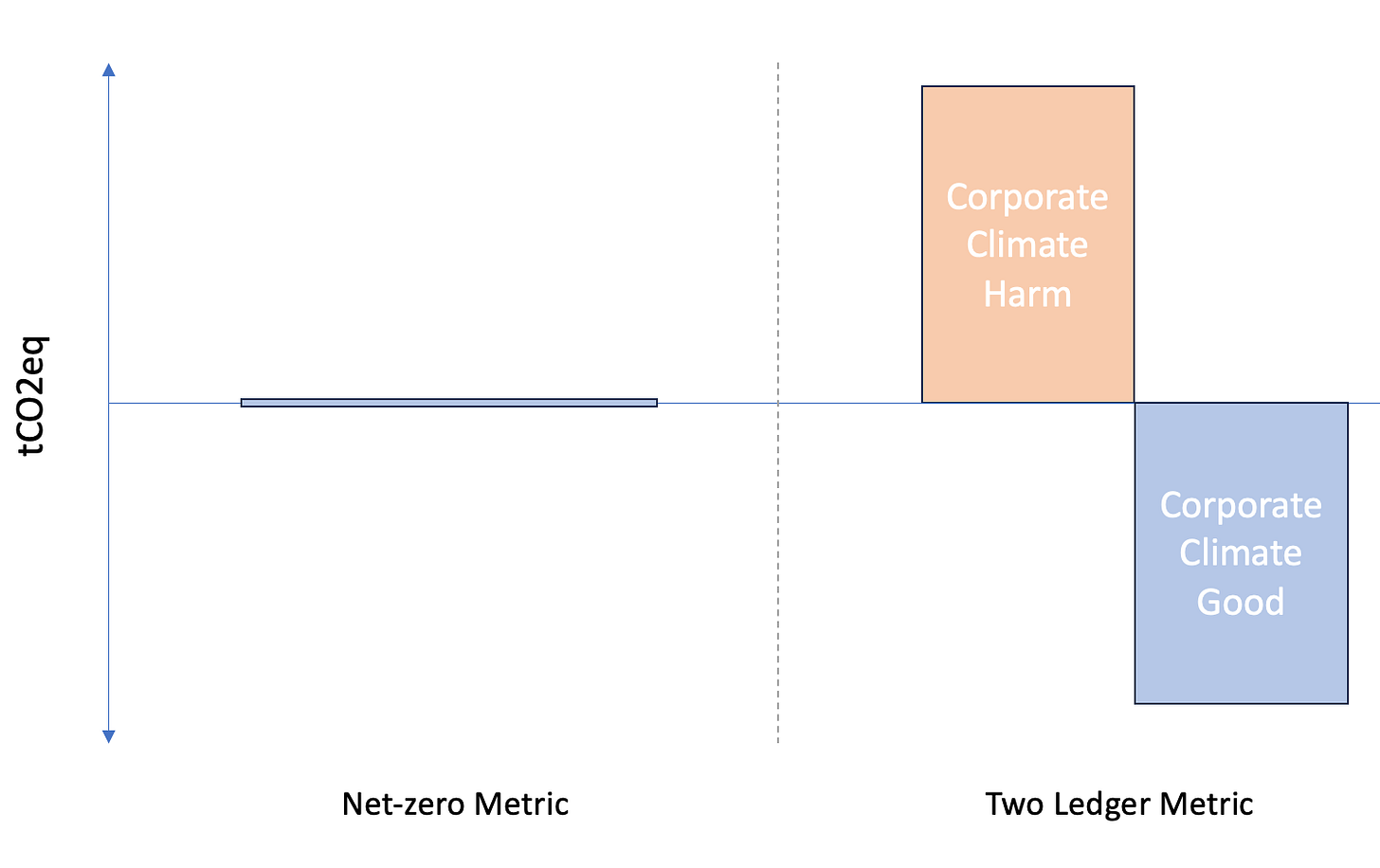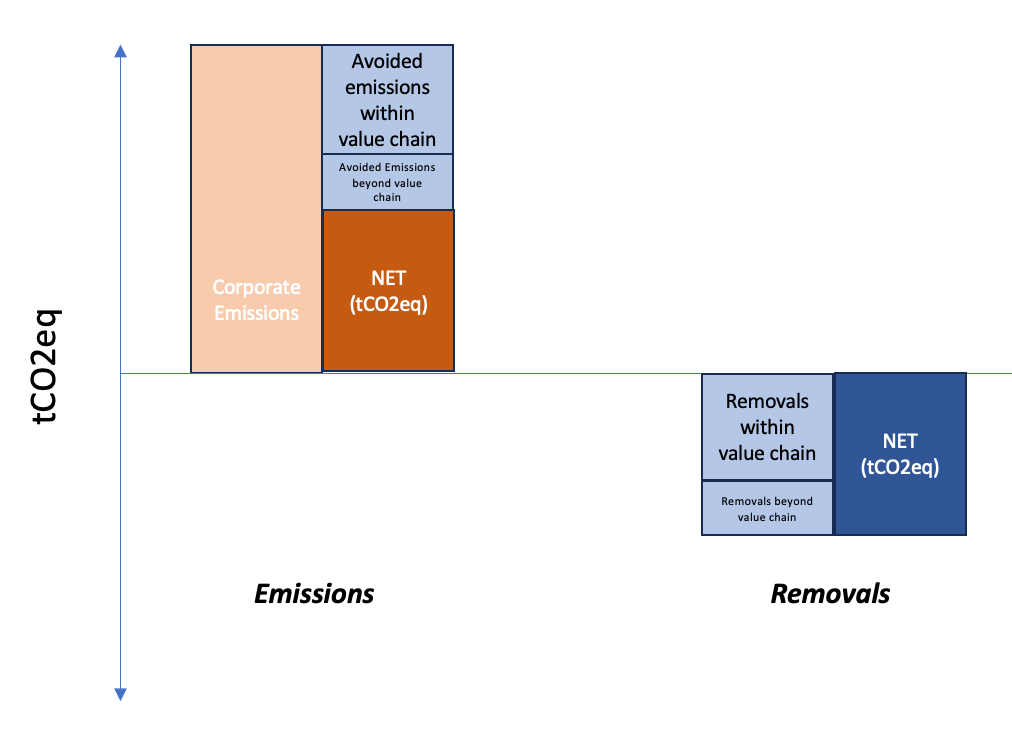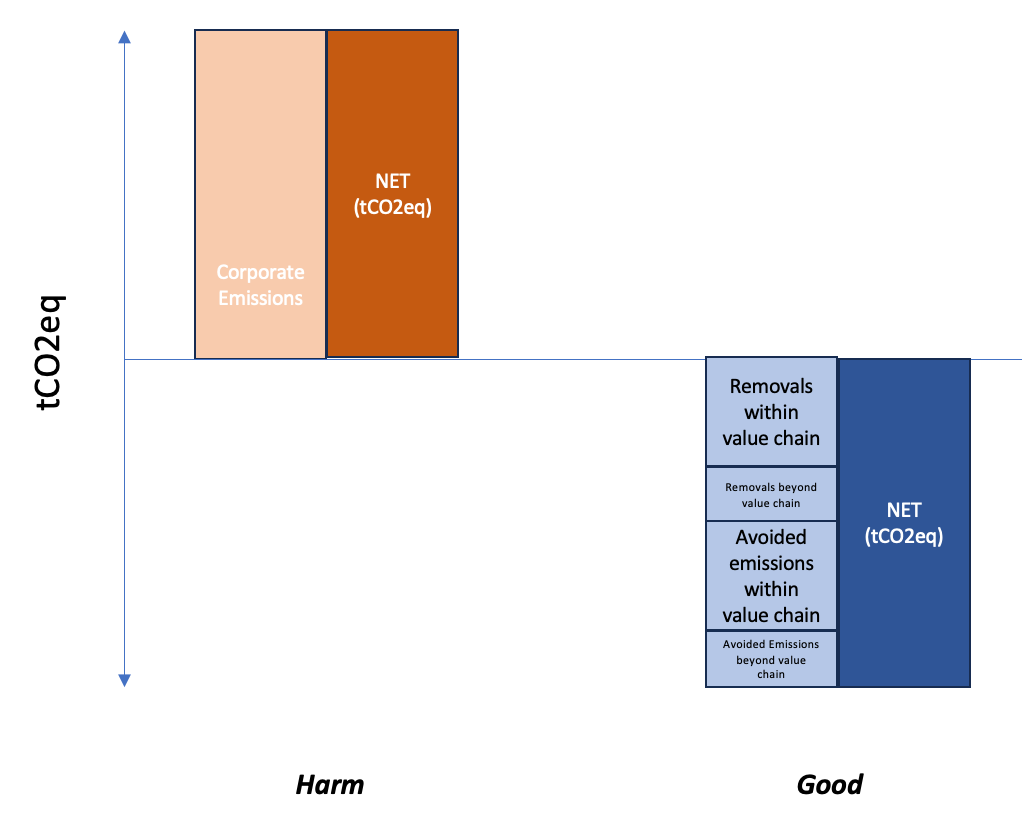A Solution to address the "License to Pollute" Critiques of Netzero - The Two-Ledger System
How we can redesign corporate carbon accounting to get the best outcomes from voluntary climate commitments.
Over the last year we have seen a significant growth in the critique of net-zero commitments and carbon offsets, both in the form of articles and lawsuits against corporate claims which has led to corporates no longer using carbon credits outside of their value chain to meet their net-zero commitment. These critiques often revolve around the “license to pollute” narrative that carbon credits used as an offset are allowing corporates to continue polluting. And I’ll be the first to admit that these critiques have some validity. A carbon neutral or netzero claim made by a corporate who has made little or no effort to decarbonize, that is a license to pollute.
So how do we address this moral hazard? Don’t blend the bad and the good together. Separate corporate climate harm from corporate climate good and track and set targets for both - it’s time to explore the two-ledger system.
The Two-Ledger System
The theory behind a Two-Ledger System is quite simple. Instead of combining all corporate climate impact into a single metric (netzero or carbon neutral), keep the “harm” that corporates are doing to the climate separate from the “good” they are doing for the climate and track and set targets for each of them separately. The main critique of offsets is that they are a license to pollute, so let’s create a system that doesn’t allow that to occur. A Two-Ledger System where one ledger counting corporate emissions and create clear targets around decarbonization. And another ledger counting corporates contributions to avoided emissions and carbon removal, the “good” ledger, which will have it’s own unique targets.
It seems that the current public sentiment is against blending the two ledgers into a net-zero metric because it is an oversimplification and obscures the true actions of corporates - so it’s harder to understand if corporates are truly making progress on decarbonization. And, we should have insight into how much corporates are contributing to climate mitigation beyond their own footprint and the types of mitigation they are supporting.
Within the two ledger framework, there are at least three options that I can see for the structure:
Value Chain Approach: Include all of the corporates footprint within Ledger A (within value chain), whether an avoided emission or a carbon removal/ Ledger B include all of the corporate climate mitigation action outside of it’s value chain, again, whether an avoided emission or a removal.
Note: The size of the boxes are purely for illustration purposes
Emissions and Removals Approach: Have Ledger A dedicated solely to emissions, so any avoided emissions whether inside or outside of a corporates value chain would be quantified within the same ledger. Ledger B would be dedicated solely to counting removals that the corporate can claim, again whether inside or outside of it’s value chain.
Strict Harm and Good Approach: A third option would be to strictly separate harm and good. Any corporate emissions are in the Harm Ledger and any contribution to climate mitigation beyond decarbonization, whether within or outside of the value chain is accounted for in the Good Ledger. Recognizing that the nomenclature for the ledgers in this approach could likely use some work.
There are benefits and drawbacks. The Value Chain Approach has the benefit of directly measuring the impact of a companies activities relative to it’s ‘contributions’. But the downside is that it mixes avoided emissions and removals which some folks in the carbon accounting world might disagree with. If we do go with the Value Chain Approach, we need to make sure that we have as robust certification systems for within value chain (insetting) as we do for climate mitigation outside of the value chain. The other potential limitation of the Value Chain Approach is simply that it might not get corporate traction because it feels distant and corporates might think that their contributions or “good” behavior beyond their value chain won’t be appreciated by consumers. I think as long as the impact is clear and robust, consumers might even value it more, this is where the branding is critical.
The Emissions and Removals Approach has the benefit of a clear separation between emissions (counting emissions and avoided emissions) and removals. But, it’s harder to tell what is the core company footprint versus what falls outside of the company footprint. My sense is that the public opinion would prefer a clearer view of the company footprint vs contribution over the separation of emissions and removals.
The Strict Harm and Good Approach does clearly differentiate between actions that corporates are taking that cause harm to the climate and actions that have positive impacts on the climate. Another benefit is that corporates will have to report any climate mitigation contributions whether within our outside of their value chain and ideally meet the same bar for quality in either case. This addresses some of the current issues with insetting, that there is not nearly as much oversight and verification of outcomes for insetting as there is for credits outside of the value chain that are transacted on the voluntary market. I haven’t yet thought of a specific drawback to the Strict Harm and Good Approach, so this is currently the front runner in my mind. But please let me know if I have a blindspot here, I am sure I haven’t thought through all of the potential implications.
For all approaches within the Two-Ledger System, the use of avoided emissions is permitted. This is based on the clear prioritization of protecting existing natural carbon sinks as set out in Project Drawdown, recognizing that there needs to be stronger oversight on baseline and additionality for those units whether within our outside of the value chain.
Limitations of a Two Ledger System
Credit Quality - The Two Ledger System does not solve for additionality, permanence, leakage, baseline or any other climate mitigation unit quality issues. There should be and is currently significant active debate and iteration on methodologies (see ICVCM). I’m all for holding all corporate emissions accounting and contributions to the highest quality standard (that is feasible to implement).
Claims - So much of the focus over the last few years has been on the right claims language that corporates can use, that is defensible, but also easy for consumers to understand. One potential limitation of this shift to a Two-Ledger System is the need to create new claims language to represent corporate harm and corporate good. On the other hand, we could just let the numbers speak for themselves and instead of some sort of label, corporates just report on their total good and their total bad to their consumers. The big question is whether consumers are able to easily understand what those numbers mean and shift their purchasing decisions accordingly. This is very much so a live question for me and would love to hear others’ thoughts. At the end of the day, my recommendation is to keep it as close to a company is doing “this much bad” and doing “this much good”, whether in words or numbers, I think consumers can easily understand that framing. If you have recommendations, I’m all ears!
Implications of a Two-Ledger System for Nature
The two-ledger system would move us away from the concept of offsets entirely. My sense is that this would reduce the criticism of nature-based solutions being used as a contribution to climate mitigation. Even if nature solutions has certain limitations regarding permanence, if it falls into a “good” ledger that is a contribution to broader climate mitigation action and not used within an offsetting structure, I wonder if we would hear less criticism of the use of these credits towards contribution climate mitigation.
And perhaps even more interestingly, the Two-Ledger System has very interesting potential to expand to include other impact areas in the form of additional harm and good ledgers such as biodiversity and other ecosystem services. Both TNFD and SBTN have been set up to track both the harm that corporates are doing to the environment and the contributions they are making towards nature-positive action. So one could easily see an expansion to a full slate of harm ledgers and good ledgers that go far beyond carbon.
What should we do next?
💡 Think critically and see what others think! It’s my opinion that we should be seriously considering a pivot towards a Two-Ledger System to address the “license to pollute” issues of net-zero and offsets and ensure corporates are taking clear action to decarbonize and contribute to climate mitigation, in a transparent manner that inspires consumers to build trust in corporate values and purchase their product. But I am curious if others agree.
✅ If you agree, then spread the word! How do we make this pivot a reality? Changing the fundamental accounting system for corporate climate claims is a multi-stakeholder advocacy initiative. It will require lobbying SBTi, VCMI and GHG Protocol and likely getting many of the leading corporates taking climate action to endorse the new structure. But once the momentum starts to build, adoption of the two ledger system could happen quite quickly. If you know folks that are in positions of influence, please share this proposal with them. And if you sit within these organizations, I’d love to have a conversation to get your reflections.
At the risk of getting too philosophical, I’ve never met a human that is pure good or pure evil. Our actions do some good for the world and our actions cause some harm. It’s the presence of both and the relative size of the good to the evil that enable others to judge who we are and whether we should be friend or foe. Understanding the harm that someone does is as important as understanding the good. Apply that same logic to corporations, to governments, and I think we can make some real progress on climate.
🤔 As always, thanks for the read and I’m very curious to hear how others are thinking about this problem and solution space. Do you agree, disagree? What am I missing? Progress happens through idea creation, feedback and iteration, let’s discuss and build together.





